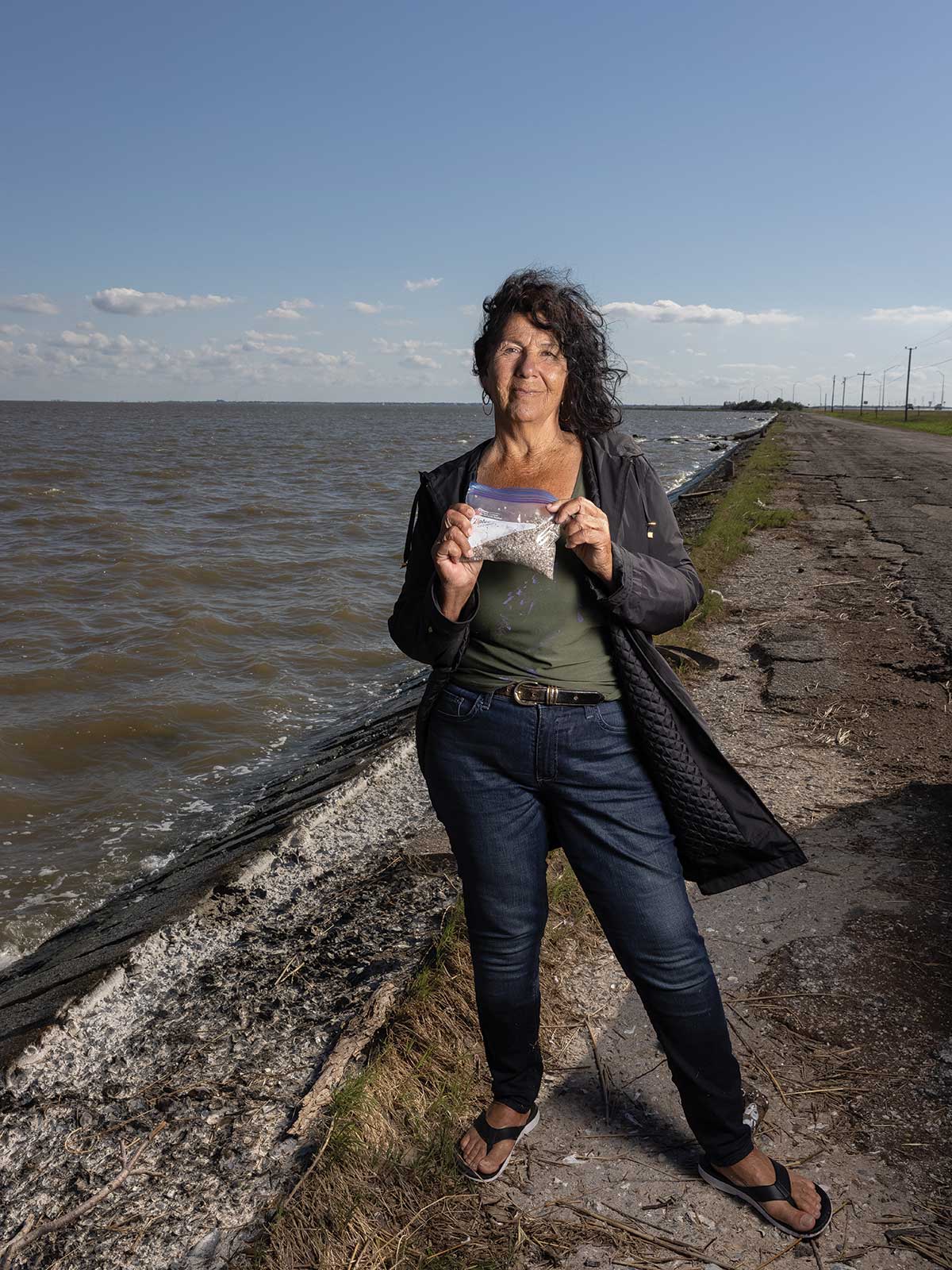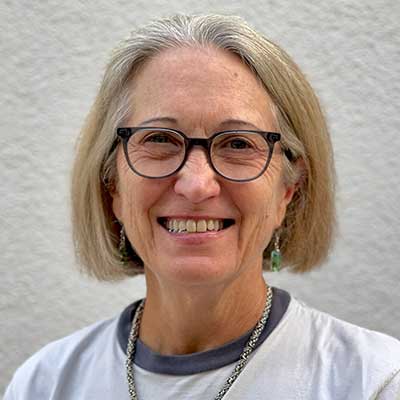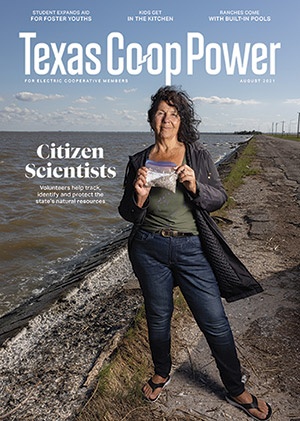Victoria resident and shrimp boat captain Diane Wilson often walks along the shoreline. She keeps a sharp eye out, not for seashells but for small pellets of plastic. Called nurdles, these lentil-sized bits are raw material used for manufacturing plastics. She has found as many as 21,000 nurdles at one time.
“They’re like little peas, or lentils, with different shapes,” says Wilson, who reports her finds to Nurdle Patrol at the University of Texas Marine Science Institute in Port Aransas. This work makes her a citizen scientist—one of thousands of people who lend their eyes, ears, hands and time to professional scientists conducting all kinds of research around the world.
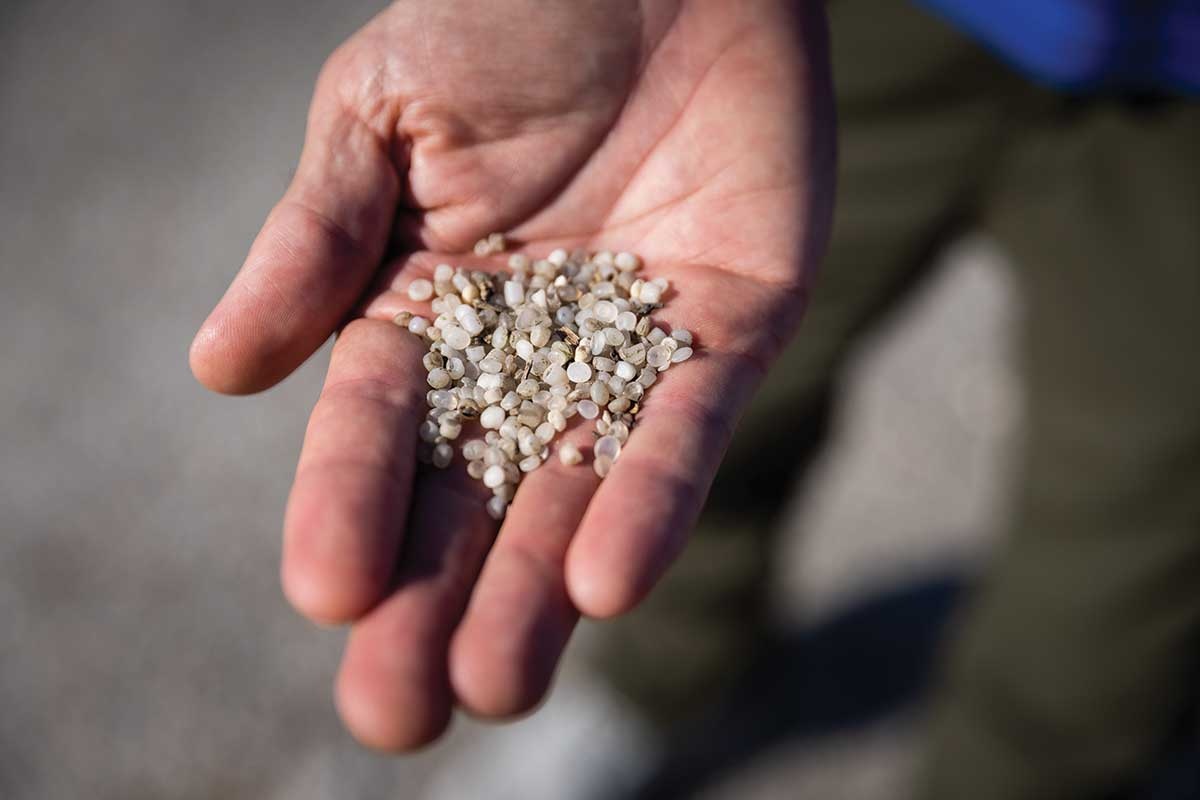
Diane Wilson has gathered millions of nurdles—like the handful shown—in her decades as a citizen scientist.
Julia Robinson
“To date, we’ve had more than 2,000 volunteers remove more than 1.5 million nurdles from beaches spanning from Brazil to Canada,” says Jace Tunnell, director of the Mission-Aransas National Estuarine Research Reserve at the institute, which runs Nurdle Patrol. After a spill left nurdles all over coastlines around Corpus Christi in September 2018, Tunnell started a Facebook group for people to report the pellets. Within a few weeks, posts had poured in from every U.S. state along the Gulf of Mexico; a university in Veracruz, Mexico; and a nonprofit on the Yucatán Peninsula. That led him to create the full-blown citizen science project.
“If this was just a university project, three or four of us going out and trying to figure out where nurdles are coming from, we would never be able to do it,” Tunnell says.
“It is really the citizen scientists who are making this project a success.”
Early Nurdle Patrol volunteers reported high concentrations of pellets in bay systems along the Texas coast, where many plastic manufacturers are located. A map created from these reports uses warmer colors to depict higher concentrations of pellets. “Texas and Louisiana are purple, indicating more than 1,000 pellets found in 10 minutes,” Tunnell says, adding that the project hopes to stop plastic from entering the environment and to give volunteers the opportunity to be involved in impactful work.
“You just collect a sample and estimate the count from what you can pick up in 10 minutes,” Wilson explains. “You don’t remove all the pellets or you’d go nuts. It’s very easy and is a way to protect your own health as well as the bays and wildlife.”
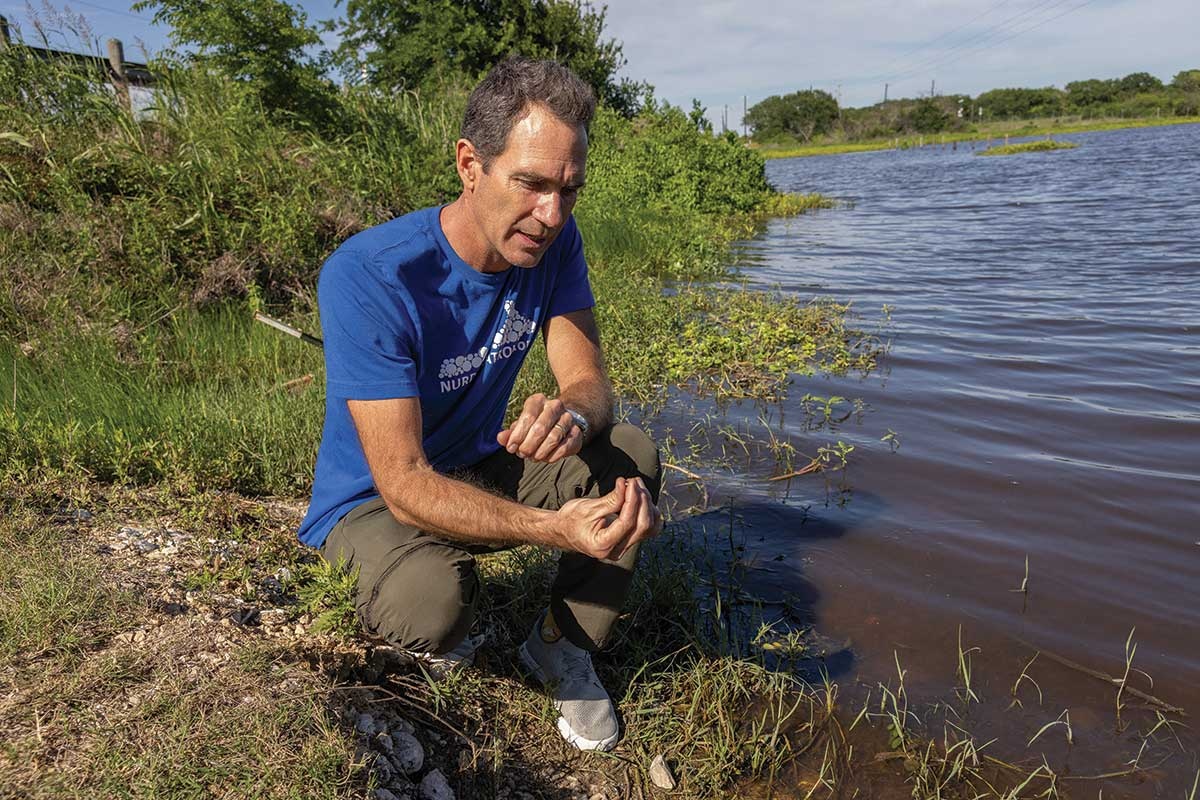
Jace Tunnell collects nurdles near a Port Lavaca estuary.
Julia Robinson
Nurdle Patrol, like most citizen science projects, requires no special skill or knowledge. Some citizen science even can be done sitting on your couch with a computer or smartphone. The FISHstory project asks people to identify and count fish in historical fishing photos, helping to estimate what kinds of and how many fish people caught in the South Atlantic during the 1940s through the 1970s. That information supports current management of those waters. Other couch-bound projects include transcribing historical documents, playing video games to show how people solve problems and completing a survey about your dog.
Other tasks can be done just outside your door. For Globe at Night, a worldwide map of artificial light pollution, simply go outside after dark, use a night sky phone app to find a designated constellation and then use a star chart to identify the faintest star you can see nearby.
Still other projects provide the perfect excuse to go exploring. The Texas Parks and Wildlife Department’s dozen Texas Nature Trackers projects ask people to report sightings anywhere in Texas of specific plants and animals using the iNaturalist app. The information helps the department understand the distribution and seasonality of species and how they change over time.
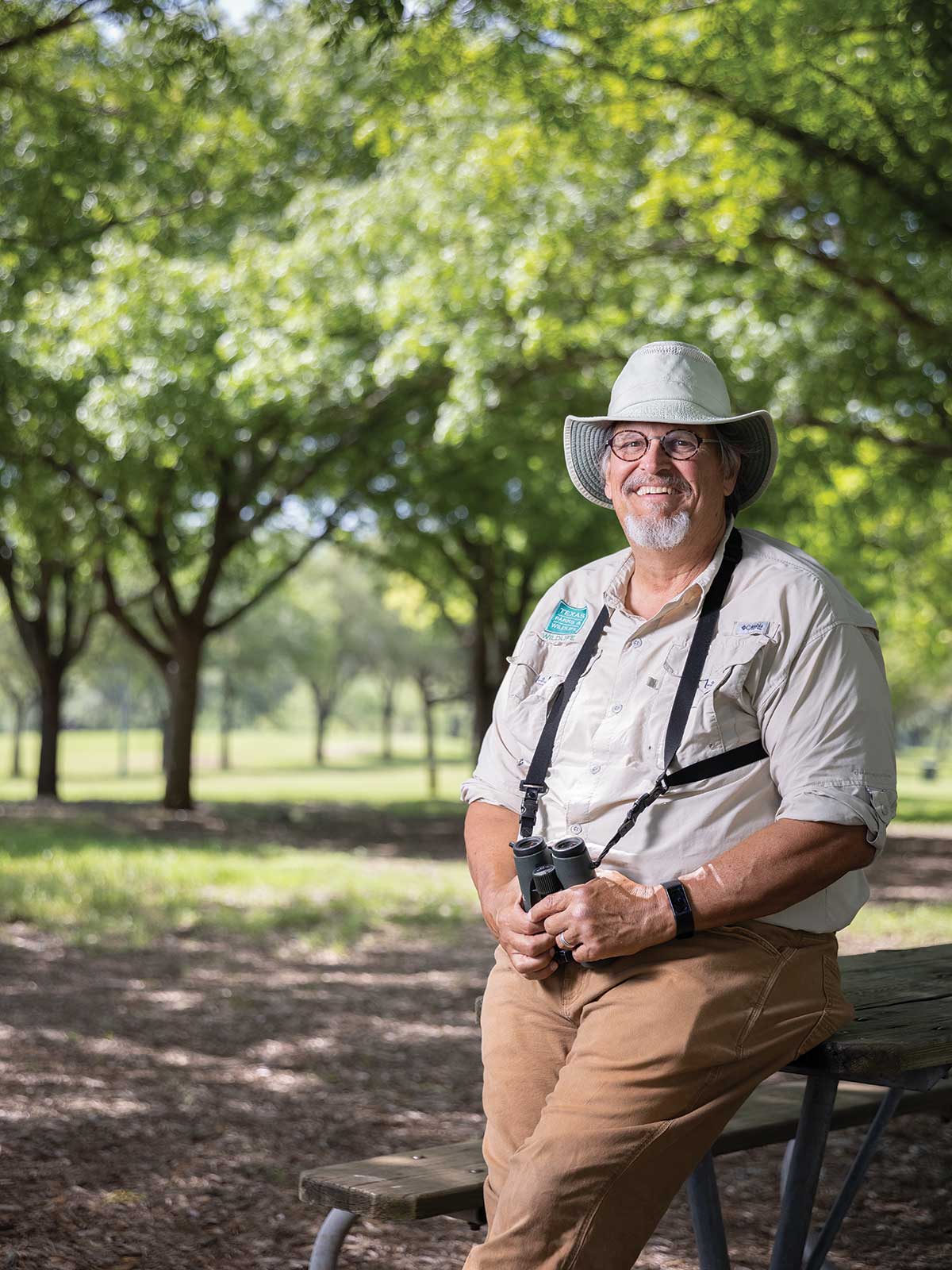
Hensley helps train citizen scientists to monitor target species all over the state.
Julia Robinson
“Every county in Texas has one assigned wildlife biologist, and it’s impossible for one individual in any given county to keep track of all the flora and fauna,” says the program’s Craig Hensley. “Through citizen science, we gain information that leads to better conservation decisions.” The projects focus on species with the greatest conservation need, such as the Texas horned lizard, whooping cranes, monarch butterflies and milkweed, and freshwater mussels, which are threatened by invasive species.
Lee County resident and Bluebonnet Electric Cooperative member Linda Jo Conn, a Texas master naturalist, participates in Nature Trackers projects on milkweed and mammals. “I call myself an iNaturalist addict,” Conn says. “I learn a lot. That’s one of the reasons I’m involved. I go places just to see what I can find and am known to stop on highways. My friends know that if I’m not waving my arms, I’m OK.”
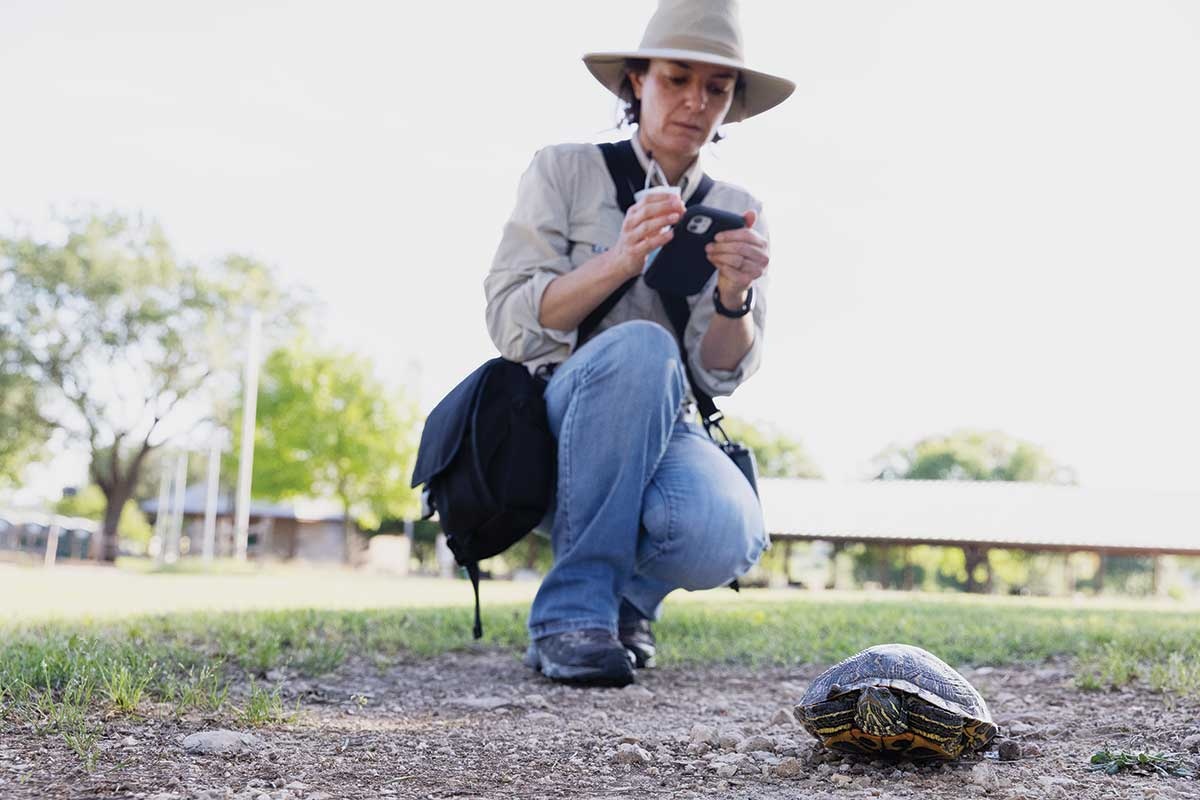
Tania Homayoun, an urban conservation biologist, uploads a picture of a turtle using the iNaturalist app.
Julia Robinson
Elaine Cowley, a Guadalupe Valley EC member who lives in Luling, helps Nature Trackers refine data on mammals in Texas, specifically the swamp rabbit. “I was already using iNaturalist for some other projects, so I said yes to this curation project,” she says. “There is so much data out there, but unless it is in the right category, TPWD can’t use it.
“There are so many ways to get involved in citizen science that don’t take a lot of time,” she adds. “It’s enjoyable at the same time. You’re outside, looking for things. It’s an opportunity to understand what’s out there and what we need to do to protect it or what we’re already doing but maybe didn’t realize.”
Weather watchers can turn their interest into citizen science as well. For six years Chris Keating of Mason has collected data for the Community Collaborative Rain, Hail and Snow Network, known as CoCoRaHS. At the most basic level, volunteers report the amount of rain in their gauges daily. Keating also submits a weekly report summarizing conditions in his Hill Country town, the number of thunderclaps when there is a storm and extreme weather details when something unusual happens, such as hail.
“I have read scientific papers that refer to CoCoRaHS, so it is a productive project, with the data put to scientific use,” Keating says. “You can do it on a phone app or a computer. It’s designed for the layperson. You just have to be able to read a rain gauge.”
A related project, the Global Learning and Observations to Benefit the Environment Observer Program, asks citizen scientists to submit photographs of cloud cover.
People who live near or visit the Texas coast can use the iSeaTurtle app to report sightings of these endangered reptiles. The data helps scientists at Texas A&M University map and understand their distribution.
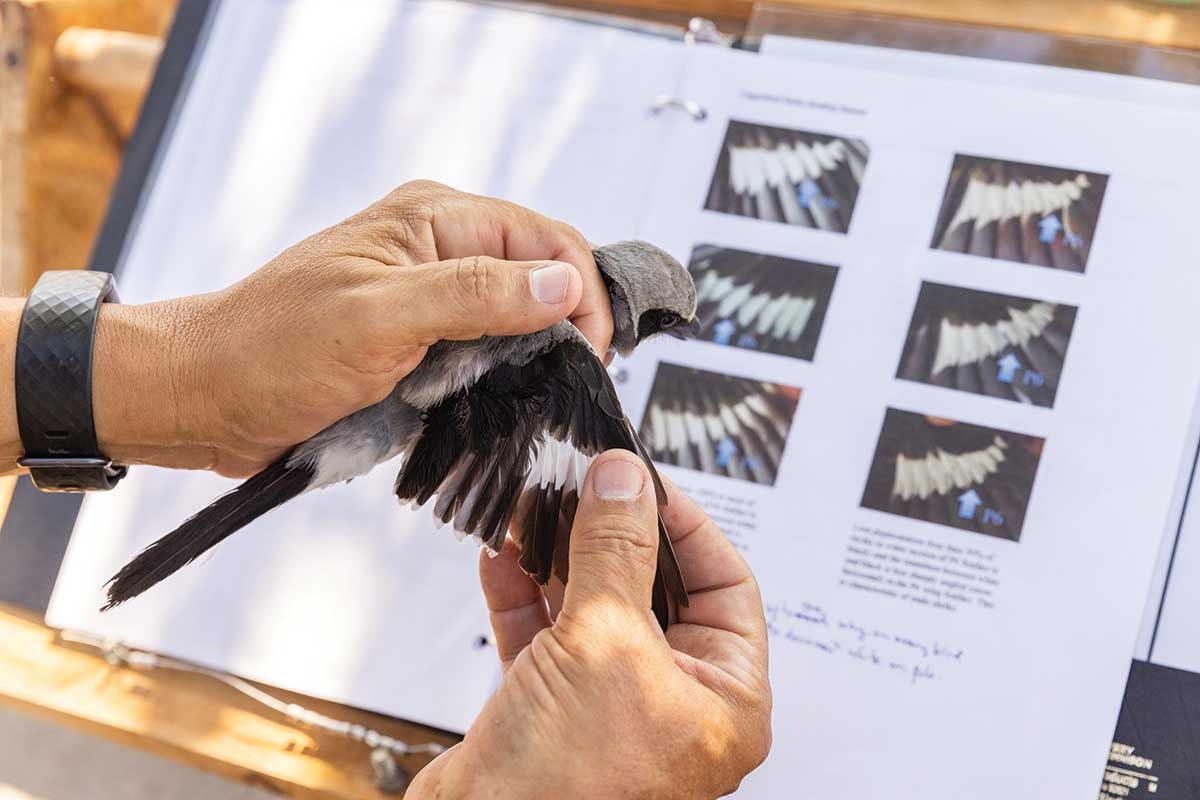
Biologist Craig Hensley examines a wing banding to find the age of a loggerhead shrike.
Julia Robinson
At the Nature Conservancy’s Texas City Prairie Preserve, outside Houston, volunteers can photograph and report plants and animals observed on its 2,300 acres using iNaturalist. Aaron Tjelmeland, preserve manager, has tallied almost 600 species of moths there. The project grew from his participation in the 2019 City Nature Challenge, an annual international event that mobilizes citizen scientists to record urban biodiversity on iNaturalist.
“That interested me in the depth and breadth of biodiversity here at the preserve, things other than the more obvious birds and reptiles,” Tjelmeland says. “From moths, it grew into the broader insect community—anything I could take a picture of, basically.”
People come into the project in different ways. “Some are photographers and eventually want to know what they’re taking pictures of,” Tjelmeland says. “Others are more like me and want to know what’s in their backyard or favorite natural area. You can just grab a camera and start snapping pictures, even without knowing a lot initially.”
Insects can seem overwhelming in terms of sheer numbers of species and the difficulty of identifying them. Tjelmeland advises starting with things you are interested in, perhaps moths or grasshoppers, and expanding from there. On the plus side, you do not have to go far to find insects.
Volunteers at the preserve have tallied almost 2,000 species of plants and animals, including insects. “Almost anywhere you go, biodiversity is weighted toward those smaller things that are often overlooked but really important in terms of ecology,” he says.
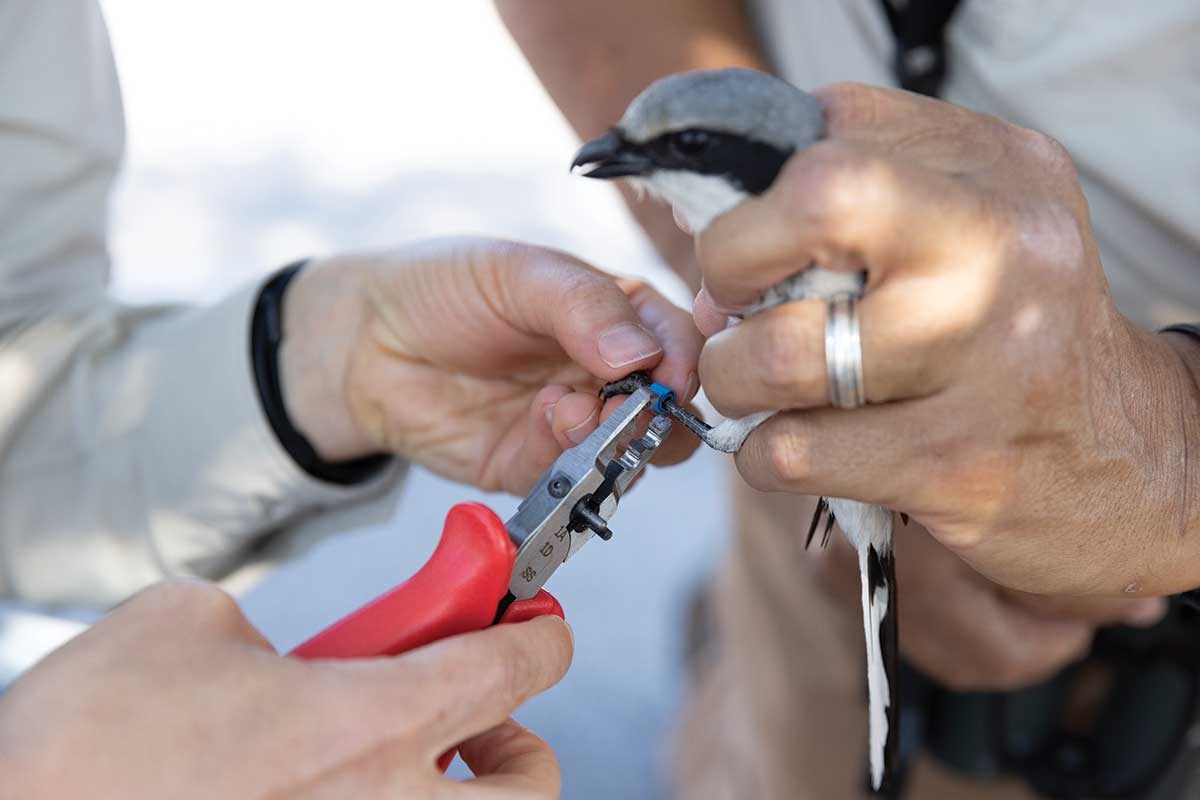
Hensley and Homayoun attach leg bands to a loggerhead.
Julia Robinson
Citizen scientists contribute information needed by scientists and project managers, providing much more than those professionals could obtain on their own. These contributions are equally if not more important in rural communities, Hensley says, especially when information is collected on private land. He notes that iNaturalist allows users to protect the location of their reports, sharing it only with the project and not the public.
“The more we know, the better we can be at managing things,” Hensley says. “An animal may be more common than we know it to be because there is good habitat on private land holdings but no one is sharing the information. As a result, we may be making decisions without all the facts. Citizen science is vital to conservation efforts going forward.”
